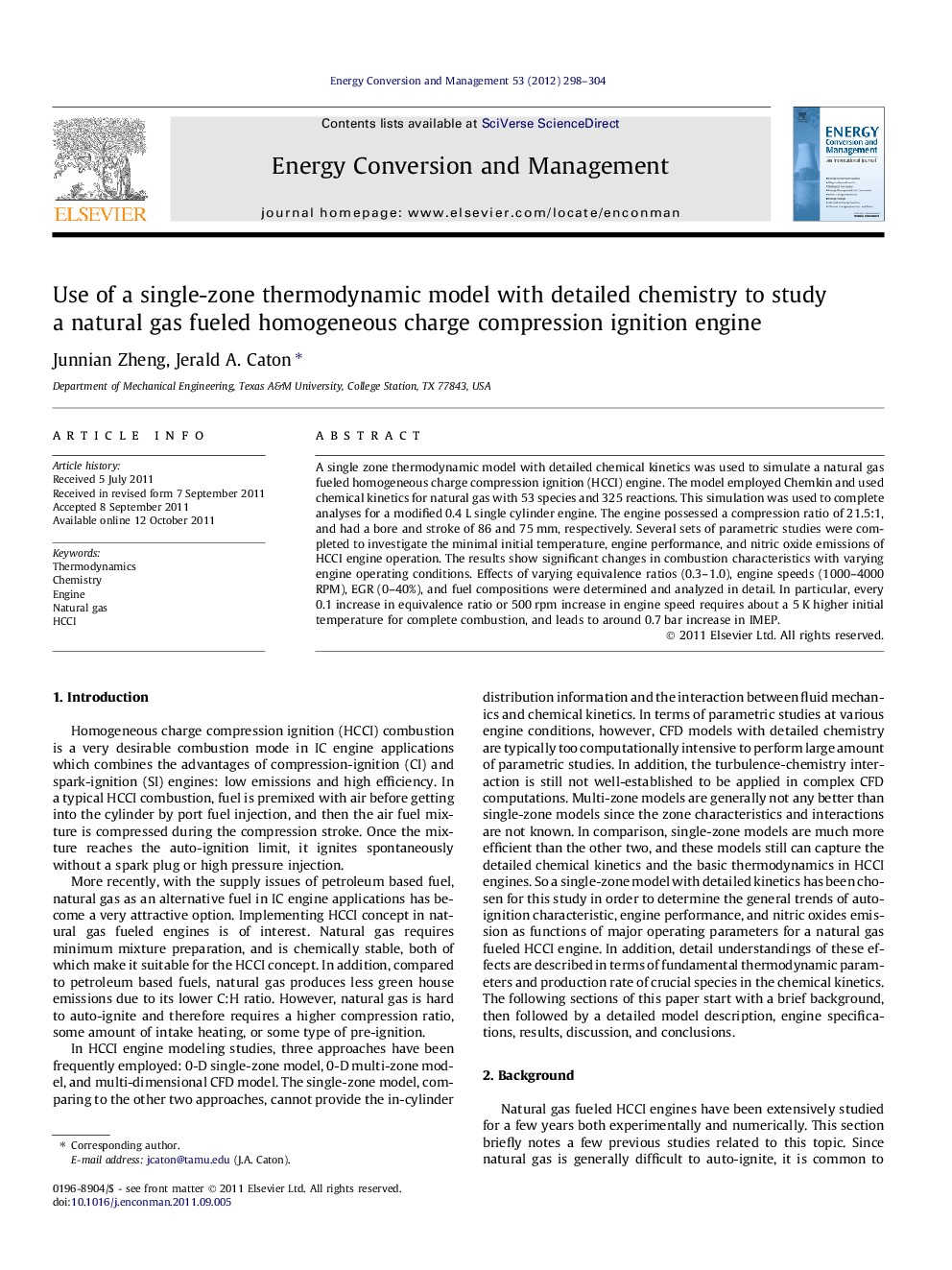| کد مقاله | کد نشریه | سال انتشار | مقاله انگلیسی | نسخه تمام متن |
|---|---|---|---|---|
| 764376 | 896981 | 2012 | 7 صفحه PDF | دانلود رایگان |

A single zone thermodynamic model with detailed chemical kinetics was used to simulate a natural gas fueled homogeneous charge compression ignition (HCCI) engine. The model employed Chemkin and used chemical kinetics for natural gas with 53 species and 325 reactions. This simulation was used to complete analyses for a modified 0.4 L single cylinder engine. The engine possessed a compression ratio of 21.5:1, and had a bore and stroke of 86 and 75 mm, respectively. Several sets of parametric studies were completed to investigate the minimal initial temperature, engine performance, and nitric oxide emissions of HCCI engine operation. The results show significant changes in combustion characteristics with varying engine operating conditions. Effects of varying equivalence ratios (0.3–1.0), engine speeds (1000–4000 RPM), EGR (0–40%), and fuel compositions were determined and analyzed in detail. In particular, every 0.1 increase in equivalence ratio or 500 rpm increase in engine speed requires about a 5 K higher initial temperature for complete combustion, and leads to around 0.7 bar increase in IMEP.
► Auto-ignition characteristics of a natural gas fueled HCCI engine.
► Engine speed had the greatest effect on the auto-ignition process.
► Increases of C2H6 or C3H8 improved the auto-ignition process.
► Engine performance was not sensitive to small changes in C2H6 or C3H8.
► Nitric oxides concentrations decreased as engine speed or EGR level was increased.
Journal: Energy Conversion and Management - Volume 53, Issue 1, January 2012, Pages 298–304